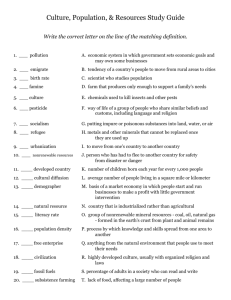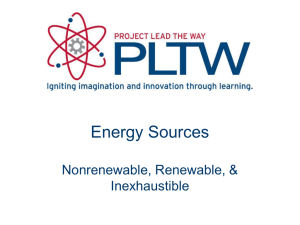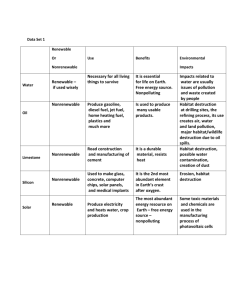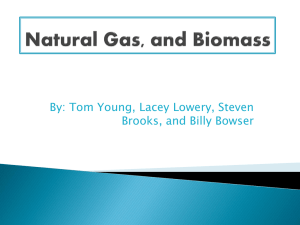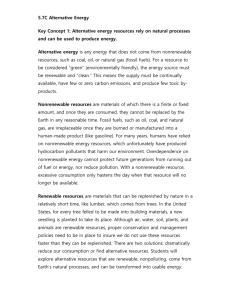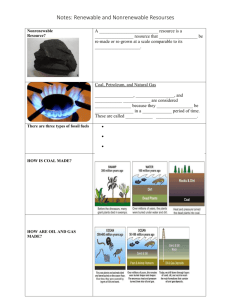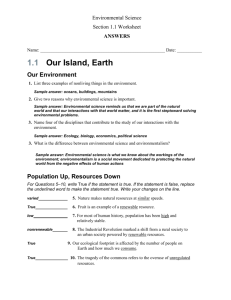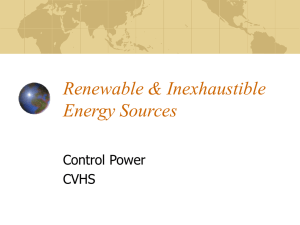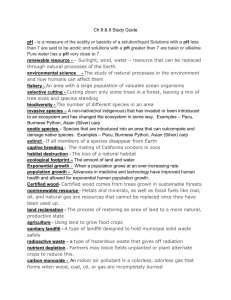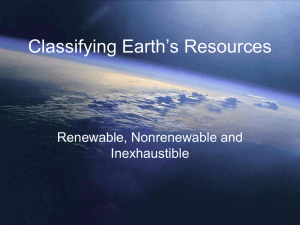Alternative Energy Lab: Cost & Efficiency Worksheet
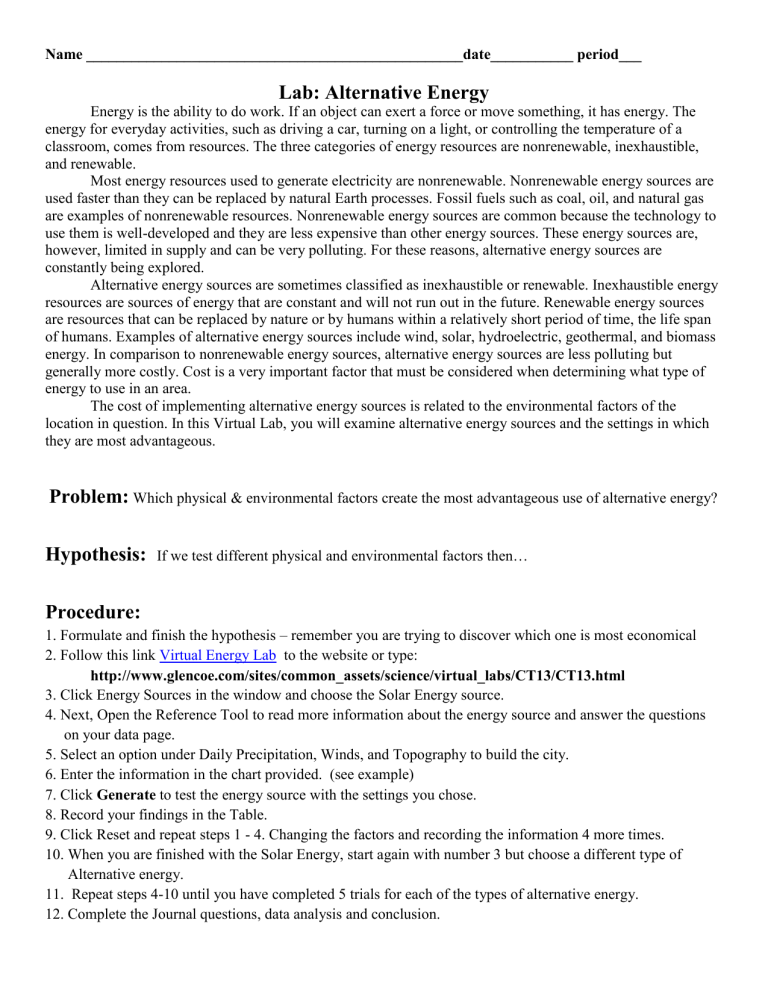
Name __________________________________________________date___________ period___
Lab: Alternative Energy
Energy is the ability to do work. If an object can exert a force or move something, it has energy. The energy for everyday activities, such as driving a car, turning on a light, or controlling the temperature of a classroom, comes from resources. The three categories of energy resources are nonrenewable, inexhaustible, and renewable.
Most energy resources used to generate electricity are nonrenewable. Nonrenewable energy sources are used faster than they can be replaced by natural Earth processes. Fossil fuels such as coal, oil, and natural gas are examples of nonrenewable resources. Nonrenewable energy sources are common because the technology to use them is well-developed and they are less expensive than other energy sources. These energy sources are, however, limited in supply and can be very polluting. For these reasons, alternative energy sources are constantly being explored.
Alternative energy sources are sometimes classified as inexhaustible or renewable. Inexhaustible energy resources are sources of energy that are constant and will not run out in the future. Renewable energy sources are resources that can be replaced by nature or by humans within a relatively short period of time, the life span of humans. Examples of alternative energy sources include wind, solar, hydroelectric, geothermal, and biomass energy. In comparison to nonrenewable energy sources, alternative energy sources are less polluting but generally more costly. Cost is a very important factor that must be considered when determining what type of energy to use in an area.
The cost of implementing alternative energy sources is related to the environmental factors of the location in question. In this Virtual Lab, you will examine alternative energy sources and the settings in which they are most advantageous.
Problem:
Which physical & environmental factors create the most advantageous use of alternative energy?
Hypothesis:
If we test different physical and environmental factors then…
Procedure:
1. Formulate and finish the hypothesis – remember you are trying to discover which one is most economical
2. Follow this link Virtual Energy Lab to the website or type:
http://www.glencoe.com/sites/common_assets/science/virtual_labs/CT13/CT13.html
3. Click Energy Sources in the window and choose the Solar Energy source.
4. Next, Open the Reference Tool to read more information about the energy source and answer the questions
on your data page.
5. Select an option under Daily Precipitation, Winds, and Topography to build the city.
6. Enter the information in the chart provided. (see example)
7. Click Generate to test the energy source with the settings you chose.
8. Record your findings in the Table.
9. Click Reset and repeat steps 1 - 4. Changing the factors and recording the information 4 more times.
10. When you are finished with the Solar Energy, start again with number 3 but choose a different type of
Alternative energy.
11. Repeat steps 4-10 until you have completed 5 trials for each of the types of alternative energy.
12. Complete the Journal questions, data analysis and conclusion.
Data:
Alternative Energy: cost, efficiency and factors that affect it.
Solar
Options Selected
Sunny, low gusts, lake, no magma, forest & farmland
Wind
Options Selected
Hydroelectric
Options Selected
Geothermal
Options Selected
Biomass
Options Selected
Level of Energy Expense
High High
Level of Energy Expense
Level of Energy Expense
Level of Energy Expense
Level of Energy Expense
Data Analysis:
(remember to summarize what is in your data charts and look for trends that will guide you toward your conclusion)
Analysis questions:
1. Define and provide an example for the following types of resources:
Nonrenewable
Renewable
Inexhaustible
2. Energy resources other than non-renewable energy sources are generally referred to as alternate energy
sources. Why is it important to develop alternate energy sources?
3. Based on the results of the experiment, identify the settings that are the most efficient and cost effective for
each of the following five alternative energy sources
* Hydroelectric
* Wind
* Solar
* Geothermal
* Biomass
4. Given an isolated desert city with little wind and long dry days, throughout the year, what would you
consider before recommending an alternative energy source?
What alternative energy source would you recommend and why? Explain
5. Currently only about 10% of energy in the United States comes from the alternative energy sources. The
remaining energy comes from non-renewable energy sources like coal, oil and natural gas. Why do you
think this might be?
Conclusion:
Use the back, restate your hypothesis and support your conclusion with your data.
